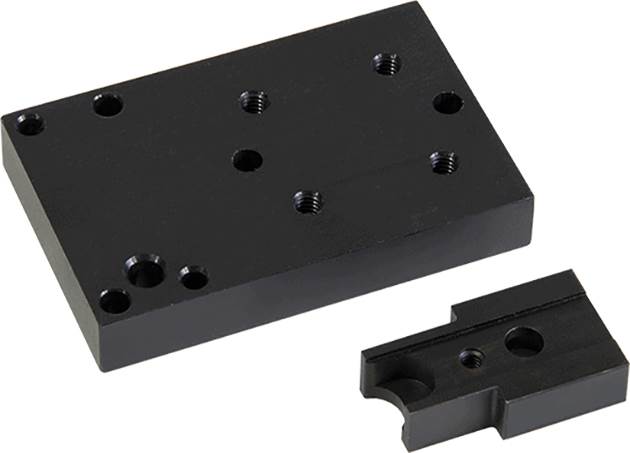What is Type-III Anodizing?
Type III aluminum anodizing, also called hard coat anodizing or hard anodizing, is used to increase the wear and corrosion resistance, increase the surface hardness, and improve the thermal and dialectical properties of treated aluminum objects. The ability to retain lubricants, PTFE coatings, also improves with Type III anodizing.
Hard coat anodizing increases the thickness of the naturally occurring oxide layer on aluminum surfaces. Natural oxide layers are generally 2 to 3 nanometers thick—with Type III anodizing, this layer can be increased to or above 50 μm* (0.002”). Properly applied hard anodic coatings create a very regular, uniform layer across the entire surface of the treated object.
Type III anodizing is an abbreviation derived from the military standard Mil-A-8625 Type III category.
* μm = micrometer (1000x the length of a nanometer)

Process of Type-III Anodizing
Conventional Type III aluminum anodizing uses a high voltage process (up to 100V) to create the oxide layer. The aluminum object itself serves as the positive electrode (or anode, from which the term “anodizing” originates) in the process. The formation of the oxide film take place by the migration of Al3+ ions away from the metal towards the electrolyte interface, while simultaneously O2- ions from the electrolyte move in the opposite directions.
The acid solution used in hard anodizing is concentrated at around 200g/liter. The voltage used starts at 25V DC and increases to 60-100V as the process continues. Conventional Type III coatings can be sealed by hydrothermal or precipitation means, or left unsealed. Choice of seal depends on the object’s intended purpose and use.
An alternative Hard Coat method that achieves superior performance properties is the Sanford Low Voltage rectification process where an AC current overlays DC current and leads to lower resistance at the anode surface. This produces a more uniform coating with a number of performance improvements. Sanford Low Voltage Processes include: PLUS, QUANTUM, SALVAGE, and MICRALOX.
Applications
- Valves
- Pistons
- Sliding Parts
- Hinge Mechanisms
- Cams
- Gears
- Insulation Plates
- Aerospace
- Automation / Robotics
- Automotive
- Electrical
- Food Manufacturing
- Equipment
- General Manufacturing
- Hydraulics / Pneumatics
Benefits
- Wear Resistance: Hard anodized coatings are more than 10 times more wear-resistant than ordinary anodized aluminum. Hard anodized aluminum exhibits only half the amount of wear that cyanide case hardened steel shows after 50,000 cycles of the standard Tabor abrasion tester.
- Hardness: Hardness Microhardness tests on hard-anodized aluminum typically have values of 500 to 530 VPN. Microhardness is nearly independent of coating thickness up to 1.5 mils.
- Heat Resistance: Hard anodized coated parts can withstand short exposures of temperatures up to 2000 degrees centigrade due to the inert nature of the coating.
- Corrosion Resistance: Hard anodized coatings typically pass the 1000-hour 5% salt spray test.
Frequently Asked Questions
How does Hard Anodizing affect dimensions of parts?
All anodizing is a conversion coating in that a portion of the base materials surface is converted from raw aluminum into aluminum oxide. In general terms, for Type III anodize ½ of the coating thickness penetrates into the surface of the parts while the other 1/2 builds up on the surface.
Can certain surfaces be masked off so they are not Hard Anodized?
All types of anodic coatings are electrical insulators so when an electrical grounding surface is required or in order to maintain close dimensional tolerances, surfaces can be readily masked such that those areas will remain anodize free.
Can other parts such as Brass or Steel be anodized?
No, the specific part being anodized must only be aluminum as anything else would be damaged by the sulfuric bath.
Is Hard Anodizing & Type II Anodizing same?
Hard anodizing is really Type III though it shares the same mil-spec and acid bath technique. Type III / hard anodize is much thicker and abrasion resistant coating compared to type II.
Should Hard Anodized material be sealed?
In general, it is required to be sealed in order to ensure the dye won’t fade or bleach out. Sealing can be accomplished using deionized water, sodium dichromate, nickel acetate, PTFE or a combination of two or more of these.

